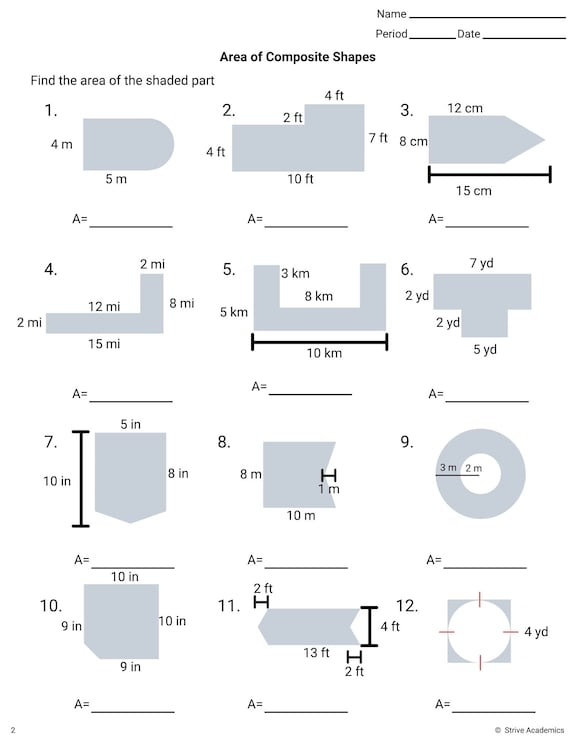Composite figures are geometric shapes made up of two or more simpler shapes. Understanding how to calculate the area and perimeter of composite figures is an important skill in mathematics. This worksheet will provide practice problems for students to master this concept.
By working through these problems, students will gain confidence in identifying and calculating the measurements of composite figures. This will help them in real-world applications such as calculating the amount of material needed for a construction project or determining the size of a garden bed.
Worksheet Problems:
1. Calculate the area of a composite figure made up of a rectangle and a triangle. The rectangle has a length of 8 cm and a width of 4 cm, and the triangle has a base of 6 cm and a height of 5 cm.
2. Find the perimeter of a composite figure composed of a square and a semicircle. The square has a side length of 10 cm, and the diameter of the semicircle is 12 cm.
3. Determine the area of a composite figure consisting of two congruent trapezoids. Each trapezoid has a height of 7 cm, a base of 5 cm, and a top length of 3 cm.
4. Calculate the perimeter of a composite figure made up of a rectangle and a half-circle. The rectangle has a length of 12 cm and a width of 6 cm, and the diameter of the half-circle is 8 cm.
5. Find the area of a composite figure composed of a parallelogram and a triangle. The parallelogram has a base of 9 cm and a height of 4 cm, and the triangle has a base of 6 cm and a height of 3 cm.
By completing these problems, students will develop their skills in calculating the area and perimeter of composite figures. This will enhance their understanding of geometry and prepare them for more complex mathematical concepts in the future.
